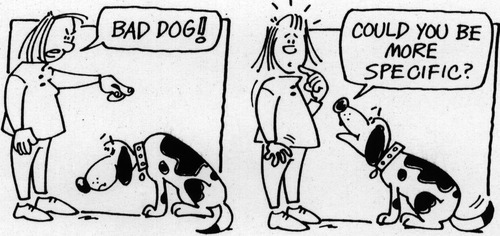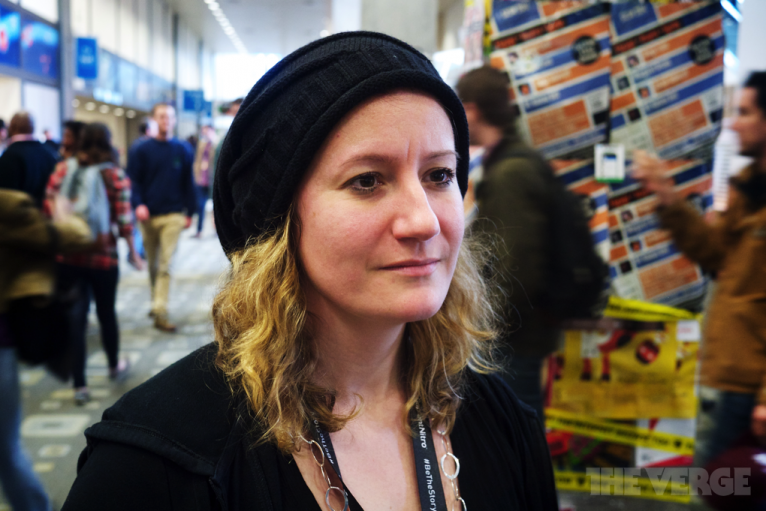For week 2 of the GMU #ds106 course being taught this Spring by Alan Levine, one of the headings in the weekly assignments this week was ‘giving and receiving peer feedback’. Whilst this can often be one of those topics that makes us yawn and say ‘yeah! I know that stuff’, it is also something so important that it can make or break an experience online or offline.
I also knew that Alan would not let us down and would find interesting nuggets for us to read on this topic. So, I decided to focus my work this week on this topic in the hope it may serve those new to this process. In my own work using self managed learning to teach a Masters level qualification we major on this topic too. If your grades depend on the quality of feedback and the assessment skills of your peer learning group, the subject is almost as important whatever the content of the course might be.
I find this particularly interesting as I have been reflecting on how to adapt some of the methods I use when I facilitate learning groups offline to support open education online. My plan here is to review what Alan has offered us and add some ideas from my own work. I am starting to form a view that ‘commenting’ generally has overlaps and also differences with ‘commenting for learning’. Here is how the weekly assignment frames the process. It is now time to,
broaden your scope of class participation by giving feedback to each other. You have gotten comments and will get more from your instructor, but it’s important as a community to comment on your classmates work, incorporate, and reflect on that feedback.
Three aspects are highlighted here:
- commenting per se
- incorporating the feedback into one’s own work
- reflecting on what the commenters say
I am interested in the fact that Alan has made a choice to put the GMU students in learning groups. In usual DS106 style, no boring group names here, the web to the rescue with a Fantasy Team Name generator! The teams are pre-assigned and name is selected. This is interesting to me because in the self managed learning methodology I use, the control of all these parameters rests with the learners. At the first residential the students choose their ‘learning set’ and one of their first tasks is to chose a name for the set. We allow at least half a day for this selection process to be done by the whole group before they meet in their learning sets for the first time the other half day!
Opening the tab of the weekly assignments and seeing the neat and fun named groups made me stop and think. In my case, the students stay together for 18 months – so I could say may be it matters more that they chose for themselves? Yet, I know other institutions that use similar self directed approaches that put their students through the process I described above each term! I am left wondering if in the name of an ideology we make it unnecessarily difficult for our students.
I also note the groups are called ‘comment groups’. So there is a clear task they have to accomplish. Research in online learning does seem to show that a task focus makes it more likely that groups online will succeed. The same research seems to indicate that pairing people up will help them learn more effectively than just learning alone. In one tab, DS106 has pragmatically and efficiently created clear conditions for success. In my ‘learning sets’, the task is not clear even though we do instantiate the idea of learning together is better than learning alone. It is not uncommon for learning set to spend several weeks deciding how they will work, agreeing assessment criteria, and setting up a ‘to do list’ for the set. Admittedly they are working towards a Masters level qualification and part of their learning has to be about the self managed learning process, but once again I am left thinking if we make it unnecessarily complicated because we are kneeling at the altar of our cherished pedagogy.
Online as a medium for learning requires that we re-think how we do things. As I opened that tab and saw the groups, I was left wondering if self-direction in the sense of ‘no direction’ unless the student sets it is in the service of learning or dogma.
The post continues offering clear guidance as to how to make the comment groups work technically – follow others in your group and it will be easier to access what they write.
We then move on the the meat of this post for me. What does it mean to ‘comment well’? There are the usual guidelines to specificity and why this matters particularly to make it easier for fellow students to make choices about what they incorporate into their work having understood the feedback.

If the comment is specific then action can be taken, if it is just an expression of like/dislike the receiver may now know something about the giver’s tastes but does not have quality data to use.
Several ideas about how to comment well are offered and two excellent (and funny) references to read more. Here I am just going to take the bullet points from these posts but I highly recommend you take time to read them.
Some quick and dirty tips from the first post:
- Determine your motivation- why are you commenting at all?
- Provide a context for your comment
- Be respectful
- Make a point
- Know what you are talking about
- One point per comment
- Keep it short
- Link carefully
- Proofread
I could go on for hours about the first one, but I will not. Let me just say that I have been on the receiving end of very mixed motivations when people have commented on my writing online, and I have gone to people’s blog with mixed motivation to comment myself. It is useful to take the time to address that first bullet before you even start to comment. In the context of this post ‘commenting for learning’ and of this run of DS106 – the motivation is clearly laid out: you comment to learn yourself and to support your colleagues learning. That is all.
In a sense the frame of learning should make commenting easier. The fact that comment groups have been set up should also help, it means you have a more limited load on you to read meaningfully what your colleagues write.
The next post explores key questions you might choose to ask yourself if you want to be a good commenter. Do you want to be a good commenter?
And I hear you say: Why, I would like to be a good commenter too! Not just here, but in other places where commenting occurs online! Well, of course you do. You’re a fine upstanding human being, not some feculent jackass with a keyboard, an internet connection and a blistering sense of personal inferiority that is indistinguishable from common sociopathy.
It is a funny post but it makes a very serious point. One of the things I value the most in DS106 is that it teaches us how to be good digital citizens. It teaches us to use the web in a way that maximises its possibilities and that means being explicit about what it means to interact functionally rather than dysfunctionally online. And the reference to this post on the weekly assignment is a great example of this. I say reading it is a must, but here are the 10 key questions to ask yourself before ‘you press that post button’,
- Do I actually have anything to say?
- Is it on topic?
- Does it stay on topic?
- If I am making an argument, do I actually know how to make an argument?
- If I’m making assertions, can what I say be backed up by actual fact?
- If I’m refuting an assertion made by others, can what I say be backed up by fact?
- Am I approaching this subject like a thoughtful human being, or like a particularly stupid fan?
- Am I being an asshole to others?
- Do I want to have a conversation or do I want to win the thread?
- Do I know when it is time to walk away?
John Scalzi may be too in your face for some tastes, but bringing it back to commenting for learning what he says bears reading and re-reading. I am new to blog commenting and never thought my life would take me down this path. In the last year, I have been on the receiving end of wonderful commenting that has taken my DS106 work to another level. I have also, rarely in the DS106 community I have to say, been on the receiving end of posters who did not ask themselves any of these questions before pressing the post button. It is painful and totally avoidable with a little forethought.
John says,
Does what you post in the comments boil down to anything other than “yes, this,” or “WRONG AGAIN,” or even worse, “who cares”? A comment is not meant to be an upvote, downvote or a “like.” It’s meant to be an addition to, and complementary to (but not necessarily complimentary of) the original post.
I love this statement. It offers a clear guideline to find balance in feedback and makes it acceptable to offer the type of feedback that may help us change. My best example of this in DS106 was when we were learning about minimalist posters. You can read the detail here it is worth reading as an example of how you can be really helpful to your comment group – I was told that to do it well I had to change what I was doing, offered an example of how to do what I could not, and positive reinforcement once I had another go even when my output was not (shall we say?) terribly smooth.
The weekly assignment also offers guidance on how to respond to comments and suggests that we think of them as a conversation to avoid a sense of one-sideness in those who take the time to comment.
I would add to that that in the context of commenting for learning, the conversation is for a purpose. It is not just small talk or networking.
In my learning groups we organise time with individual air-time for each participant. This air-time is time for each student to use as they see fit given their learning contract. They are in control and manage the conversation. I see this as analogous to using a blog for educational purposes. My blog is the place where I have my air time, and where I manage the conversation to help me achieve my learning goals.
I too (unsurprisingly) have a set of questions I give my students. I add them here, as I end this post, as I think the complement what we have been offered this week by focussing on the learning process and people more than on the written word.
I suggest that as the blog owner you ask yourself these questions as you read your comments, and post ‘feedback on the feedback’:
- Am I getting what I need?
- Is this useful to me?
- Have I understood what is being said?
- What else do I need from the group?
I say to my students if you get to the end of your time and you have not got what you needed from the group, it is because you did not have the courage to act on the answers to the above questions. If you are not getting what you need, tell us, and tell us what you want instead. It is not that hard if we assume we are all here to help each other learn.
If you are the commenter, ask yourself these questions as you read the post carefully ( i.e. more than a quick scan)
- What does this person want from me?
- Is what I am about to say going to assist their learning?
- What patterns do I notice?
- How does this relate to their learning goals?
People will give you clues in their posts as to what they need from you as a commenter. Watch the tendency we all have to go off on tangents, and stay focused on commenting for learning. As you get to know your comment group you will start to see patterns in their behaviour and their output. We are not great at noticing patterns – for good or not – and hearing them from those who are helping us learn can help us change.
For example, I have a tendency to devalue what I produce in DS106. I have (had?) a belief that says that I am an academic not an artist. So, I started DS106 calling my output mere artefacts. It has taken me a long time, but you will now (as a result of feedback from the DS106 community which met all the criteria I have spoken about here, of course 🙂 see the tag #gifart in some of my animated gifs. This may seem like a small thing, but it does show a change in habitual patterns that others noticed and flagged up.
In closing, I am glad I took the time to reflect on commenting rather than get involved with what may have seemed a more fun assignment. The more I reflect on this process (which is at the edge of learning online in my view), the more I see that unless we have online spaces that support good quality interaction of this kind and us (as students and teachers) implementing best practice in commenting for learning, the potential of open education will not be realised. But that is another story…
Bibliography
Cunningham, I. (1999). The wisdom of strategic learning: The self managed learning solution. Gower Publishing, Ltd.
Dowes, S. (2010) The role of the Educator
Enyedy, N., & Hoadley, C. M. (2006). From dialogue to monologue and back: Middle spaces in computer-mediated learning. International Journal of Computer-Supported Collaborative Learning, 1(4), 413-439.
Myers, D. (1987a). A new environment for communication play: On-line play. In G.A. Fine (Ed.) Meaningful Play, Playful Meaning (pp. 231-245). Champaign, IL: Human Kinetics Publishers.
Uribe, D., Klein, J. D., & Sullivan, H. (2003). The effect of computer-mediated collaborative learning on solving III-defined problems. Educational Technology Research and Development, 51(1), 5-19.
Xin, C., & Feenberg, A. (2006). Pedagogy in Cyberspace: The Dynamics of Online Discourse. Journal of Distance Education, 21(2).
Witthaus, G. (2014) Should MOOC students be grouped?
















Commenting for learning
For week 2 of the GMU #ds106 course being taught this Spring by Alan Levine, one of the headings in the weekly assignments this week was ‘giving and receiving peer feedback’. Whilst this can often be one of those topics that makes us yawn and say ‘yeah! I know that stuff’, it is also something so important that it can make or break an experience online or offline.
I also knew that Alan would not let us down and would find interesting nuggets for us to read on this topic. So, I decided to focus my work this week on this topic in the hope it may serve those new to this process. In my own work using self managed learning to teach a Masters level qualification we major on this topic too. If your grades depend on the quality of feedback and the assessment skills of your peer learning group, the subject is almost as important whatever the content of the course might be.
I find this particularly interesting as I have been reflecting on how to adapt some of the methods I use when I facilitate learning groups offline to support open education online. My plan here is to review what Alan has offered us and add some ideas from my own work. I am starting to form a view that ‘commenting’ generally has overlaps and also differences with ‘commenting for learning’. Here is how the weekly assignment frames the process. It is now time to,
Three aspects are highlighted here:
I am interested in the fact that Alan has made a choice to put the GMU students in learning groups. In usual DS106 style, no boring group names here, the web to the rescue with a Fantasy Team Name generator! The teams are pre-assigned and name is selected. This is interesting to me because in the self managed learning methodology I use, the control of all these parameters rests with the learners. At the first residential the students choose their ‘learning set’ and one of their first tasks is to chose a name for the set. We allow at least half a day for this selection process to be done by the whole group before they meet in their learning sets for the first time the other half day!
Opening the tab of the weekly assignments and seeing the neat and fun named groups made me stop and think. In my case, the students stay together for 18 months – so I could say may be it matters more that they chose for themselves? Yet, I know other institutions that use similar self directed approaches that put their students through the process I described above each term! I am left wondering if in the name of an ideology we make it unnecessarily difficult for our students.
I also note the groups are called ‘comment groups’. So there is a clear task they have to accomplish. Research in online learning does seem to show that a task focus makes it more likely that groups online will succeed. The same research seems to indicate that pairing people up will help them learn more effectively than just learning alone. In one tab, DS106 has pragmatically and efficiently created clear conditions for success. In my ‘learning sets’, the task is not clear even though we do instantiate the idea of learning together is better than learning alone. It is not uncommon for learning set to spend several weeks deciding how they will work, agreeing assessment criteria, and setting up a ‘to do list’ for the set. Admittedly they are working towards a Masters level qualification and part of their learning has to be about the self managed learning process, but once again I am left thinking if we make it unnecessarily complicated because we are kneeling at the altar of our cherished pedagogy.
Online as a medium for learning requires that we re-think how we do things. As I opened that tab and saw the groups, I was left wondering if self-direction in the sense of ‘no direction’ unless the student sets it is in the service of learning or dogma.
The post continues offering clear guidance as to how to make the comment groups work technically – follow others in your group and it will be easier to access what they write.
We then move on the the meat of this post for me. What does it mean to ‘comment well’? There are the usual guidelines to specificity and why this matters particularly to make it easier for fellow students to make choices about what they incorporate into their work having understood the feedback.
If the comment is specific then action can be taken, if it is just an expression of like/dislike the receiver may now know something about the giver’s tastes but does not have quality data to use.
Several ideas about how to comment well are offered and two excellent (and funny) references to read more. Here I am just going to take the bullet points from these posts but I highly recommend you take time to read them.
Some quick and dirty tips from the first post:
I could go on for hours about the first one, but I will not. Let me just say that I have been on the receiving end of very mixed motivations when people have commented on my writing online, and I have gone to people’s blog with mixed motivation to comment myself. It is useful to take the time to address that first bullet before you even start to comment. In the context of this post ‘commenting for learning’ and of this run of DS106 – the motivation is clearly laid out: you comment to learn yourself and to support your colleagues learning. That is all.
In a sense the frame of learning should make commenting easier. The fact that comment groups have been set up should also help, it means you have a more limited load on you to read meaningfully what your colleagues write.
The next post explores key questions you might choose to ask yourself if you want to be a good commenter. Do you want to be a good commenter?
It is a funny post but it makes a very serious point. One of the things I value the most in DS106 is that it teaches us how to be good digital citizens. It teaches us to use the web in a way that maximises its possibilities and that means being explicit about what it means to interact functionally rather than dysfunctionally online. And the reference to this post on the weekly assignment is a great example of this. I say reading it is a must, but here are the 10 key questions to ask yourself before ‘you press that post button’,
John Scalzi may be too in your face for some tastes, but bringing it back to commenting for learning what he says bears reading and re-reading. I am new to blog commenting and never thought my life would take me down this path. In the last year, I have been on the receiving end of wonderful commenting that has taken my DS106 work to another level. I have also, rarely in the DS106 community I have to say, been on the receiving end of posters who did not ask themselves any of these questions before pressing the post button. It is painful and totally avoidable with a little forethought.
John says,
I love this statement. It offers a clear guideline to find balance in feedback and makes it acceptable to offer the type of feedback that may help us change. My best example of this in DS106 was when we were learning about minimalist posters. You can read the detail here it is worth reading as an example of how you can be really helpful to your comment group – I was told that to do it well I had to change what I was doing, offered an example of how to do what I could not, and positive reinforcement once I had another go even when my output was not (shall we say?) terribly smooth.
The weekly assignment also offers guidance on how to respond to comments and suggests that we think of them as a conversation to avoid a sense of one-sideness in those who take the time to comment.
I would add to that that in the context of commenting for learning, the conversation is for a purpose. It is not just small talk or networking.
In my learning groups we organise time with individual air-time for each participant. This air-time is time for each student to use as they see fit given their learning contract. They are in control and manage the conversation. I see this as analogous to using a blog for educational purposes. My blog is the place where I have my air time, and where I manage the conversation to help me achieve my learning goals.
I too (unsurprisingly) have a set of questions I give my students. I add them here, as I end this post, as I think the complement what we have been offered this week by focussing on the learning process and people more than on the written word.
I suggest that as the blog owner you ask yourself these questions as you read your comments, and post ‘feedback on the feedback’:
I say to my students if you get to the end of your time and you have not got what you needed from the group, it is because you did not have the courage to act on the answers to the above questions. If you are not getting what you need, tell us, and tell us what you want instead. It is not that hard if we assume we are all here to help each other learn.
If you are the commenter, ask yourself these questions as you read the post carefully ( i.e. more than a quick scan)
People will give you clues in their posts as to what they need from you as a commenter. Watch the tendency we all have to go off on tangents, and stay focused on commenting for learning. As you get to know your comment group you will start to see patterns in their behaviour and their output. We are not great at noticing patterns – for good or not – and hearing them from those who are helping us learn can help us change.
For example, I have a tendency to devalue what I produce in DS106. I have (had?) a belief that says that I am an academic not an artist. So, I started DS106 calling my output mere artefacts. It has taken me a long time, but you will now (as a result of feedback from the DS106 community which met all the criteria I have spoken about here, of course 🙂 see the tag #gifart in some of my animated gifs. This may seem like a small thing, but it does show a change in habitual patterns that others noticed and flagged up.
In closing, I am glad I took the time to reflect on commenting rather than get involved with what may have seemed a more fun assignment. The more I reflect on this process (which is at the edge of learning online in my view), the more I see that unless we have online spaces that support good quality interaction of this kind and us (as students and teachers) implementing best practice in commenting for learning, the potential of open education will not be realised. But that is another story…
Bibliography
Cunningham, I. (1999). The wisdom of strategic learning: The self managed learning solution. Gower Publishing, Ltd.
Dowes, S. (2010) The role of the Educator
Enyedy, N., & Hoadley, C. M. (2006). From dialogue to monologue and back: Middle spaces in computer-mediated learning. International Journal of Computer-Supported Collaborative Learning, 1(4), 413-439.
Myers, D. (1987a). A new environment for communication play: On-line play. In G.A. Fine (Ed.) Meaningful Play, Playful Meaning (pp. 231-245). Champaign, IL: Human Kinetics Publishers.
Uribe, D., Klein, J. D., & Sullivan, H. (2003). The effect of computer-mediated collaborative learning on solving III-defined problems. Educational Technology Research and Development, 51(1), 5-19.
Xin, C., & Feenberg, A. (2006). Pedagogy in Cyberspace: The Dynamics of Online Discourse. Journal of Distance Education, 21(2).
Witthaus, G. (2014) Should MOOC students be grouped?